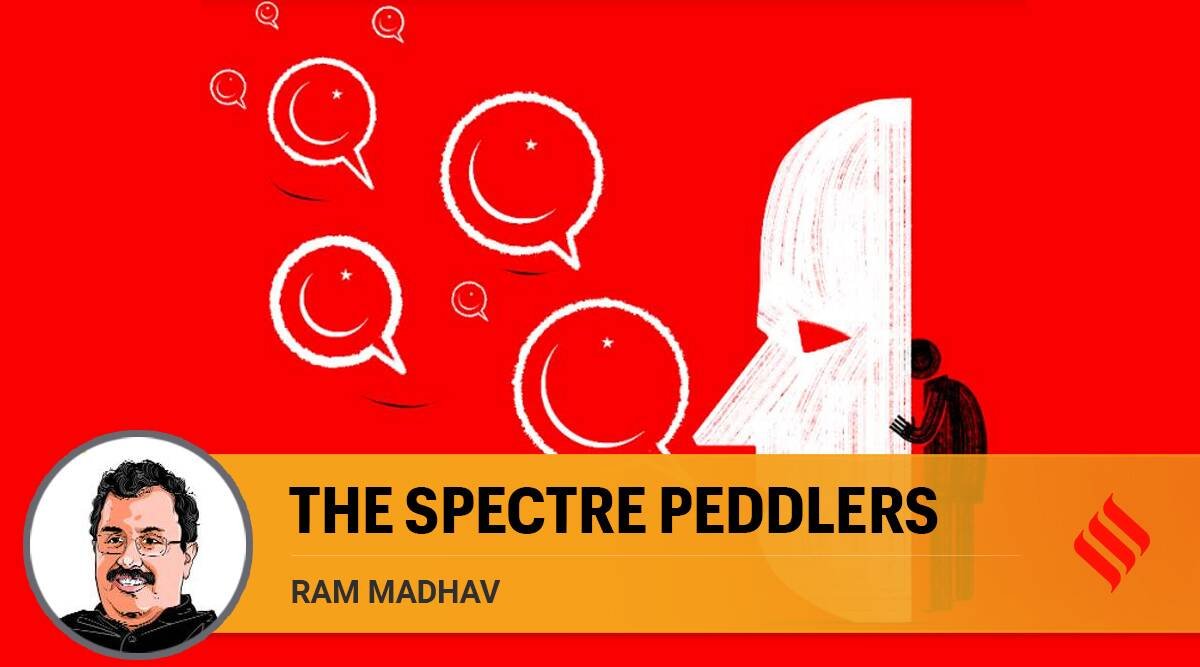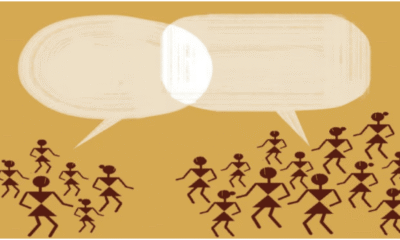
|
Getting your Trinity Audio player ready...
|
(The article was originally published by Indian Express on October 8, 2022 as a part of Dr Madhav’s bi-weekly column titled ‘Ram Rajya’. Views expressed are personal.)
India’s first citizen is an “Adivasi” woman from one of the remotest tribal areas in eastern India who succeeded a “Dalit” president. Muslims, Christians and other “minorities” hold high positions in government, judiciary and bureaucracy and are members of Parliament and legislators in states in large numbers. India’s Sikh majority state of Punjab has a Sikh chief minister. Christian majority states like Nagaland, Mizoram and Meghalaya have Christian chief ministers, some in alliance with the BJP. The minority welfare ministries across the country, including in Uttar Pradesh with over 40 million Muslims, are in the hands of Muslim ministers.
In fact, in the last few years, systematic efforts by central and state governments have helped the poor and more discriminated sections within the Muslim community — the Pasmanda or Arzal (Dalit) — to rise in economic, social and political status in the country. Muslim women are the beneficiaries of measures regulating “triple talaq”, a regressive practice continuing in India even as most Islamic countries have rejected it.
Sporadic incidents involving individual members of different communities apart, India has been largely free of communal clashes in the last eight years, a regular occurrence across the country in the past. Even the reprehensible incidents of mob lynching were few and not limited to any one community. If there were Muslim victims, there were Hindu victims too. India’s law and order establishment takes swift action against all culprits.
Yet, a paid advertisement in a prestigious American daily claims that in India “millions of citizens face religious persecution, discrimination and deadly mob violence”. The advertisement, released “on the occasion of Mahatma Gandhi’s birthday”, goes against the central tenet of Gandhism — truth. It is filled with lies and innuendo, and there is no substantiation by facts or data. The newspaper concerned has categorised those blatant lies as an “advertisement”, but it should probably be called an “advertorial”.
A simple fact-check would have prevented the prestigious newspaper from publishing this malice-filled piece. The criminal justice system in India, the law and order machinery, is controlled by the governments of the Indian states, many of the larger ones controlled by the Opposition. Similarly, India’s judiciary is highly reputed for its independent thinking and jurisprudence. Yet the propagandists peddle lies that “Indian judiciary and police are filled with BJP/RSS loyalists”.
The global audience is constantly fed such misinformation largely by groups inimical to India’s democracy and interests. Pakistan-sponsored or Khalistan-inspired groups are conspicuous by their presence. But what lends credibility to such lies is the insidious lending of support by the left-liberal cabal in the West. Salvatore Babones, a respected Australian political sociologist, called these western think tank elites the “true barbarians”. Unable to accept the rejection of their biases by mainstream Indian society, these groups have now shifted their base to the western world and continue their propaganda by firing from the shoulders of groups such as the ones that paid for the advertisement.
Such propaganda, although a PR challenge for Indian embassies abroad, may not have any impact on average Indians. But the gullible among sections of the minority community may still fall for it. Especially when sections of India’s own political establishment, for their own political ends, seek to lend credibility to such a narrative.
In the latest shocker, Mallikarjun Kharge, the senior Congress leader aspiring to be the next president of the party, has “warned” his partymen that if Modi gets strengthened further, “the rule of sanatan dharma and RSS will come in this country”. From “Hindutva forces”, the Opposition leadership has now gone on to besmirch “sanatan dharma”. Kharge probably doesn’t know that Gandhi always called himself a “sanatani Hindu”. Today’s Gandhis may not have read their own great grandfather Jawahar Lal Nehru who wrote in “Discovery of India” that “Sanatana dharma, meaning the ancient religion, could be applied to any of the ancient Indian faiths (including Buddhism and Jainism)”.
It is a test for the ability of the minorities in general and Muslims in particular to see through the deviousness of this propaganda. There has always been a vested interest in creating the narrative of “minorities in danger”. It was Jinnah who used it to the hilt before Partition. It has now become bread and butter for many a liberal. The newly emerging Muslim leadership in the country should reject this cacophony and seize an opportunity that is being offered.
A large number of Muslim leaders have seen in the RSS an adversary all these years despite its engagement with the community right from the time of Guruji Golwalkar. Today, there is a thaw in the relations between the two. Some prominent members of Muslim civil society have initiated a dialogue with the RSS chief recently, which was followed up by him visiting a madrasa in Delhi.
Bhagwat has been showing considerable openness in engaging with the Muslim community for quite some time now. His predecessors like Balasaheb Deoras, Rajendra Singh and Sudarshan also did it. This time, Bhagwat’s efforts are more focused. At a Muslim congregation last year, he told the audience that they were not separate from the Hindu community. In his annual Vijayadashami address a few days ago, the RSS chief told the audience that “shakti shanti ke liye” — strength should be for peace.
India is a large country. Its diversity is mind-boggling. It has a centuries-old history of communal strife too. The partition on communal lines was the singularly most harmful political development in the last century that had created a huge gulf between the two communities. The legacy of that communal strife manifests in occasional and sporadic flare-ups. Yet, Indian society has always firmly kept up the ethos of “unity in diversity”. It didn’t allow India to be converted into another version of Pakistan.
Managing “diverse democracies” and preventing them from falling apart is seen as a big challenge by the western world today. Yascha Mounk of Washington’s Council on Foreign Relations called it “The Great Experiment”. But in India, it was not merely an experiment, it has been the lived experience.



